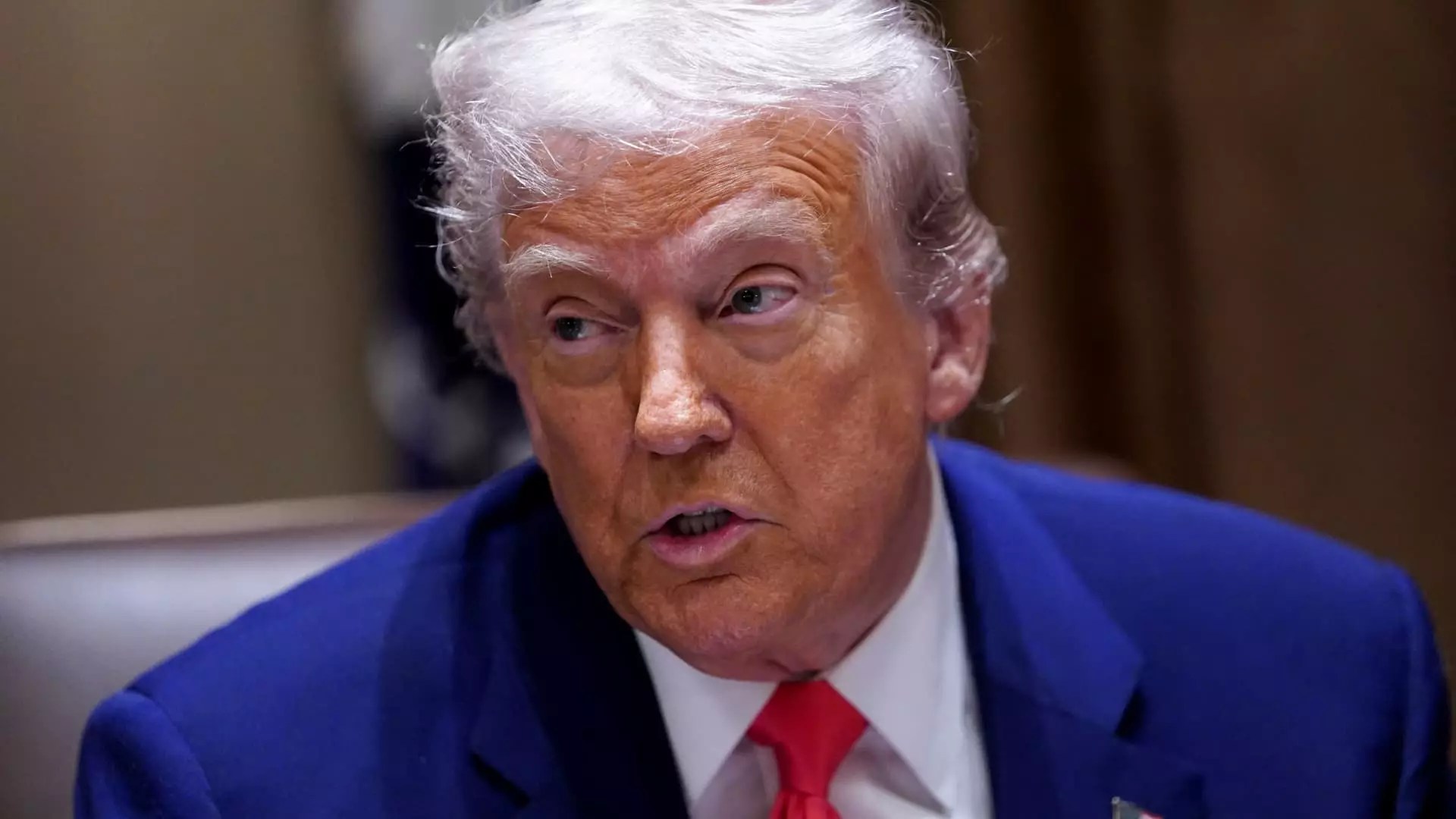In an age where globalization has woven together the economies of nations, the repercussions of imposing a staggering 145% tariff on Chinese imports by President Donald Trump could lead to a catastrophic rift between the U.S. and one of its largest trading partners. As economist Erica York articulates, such extreme tariffs threaten to sever vital trade dynamics, positioning the U.S. economy for a period of alarming stagnation. These moves raise significant concerns about the feasibility of a competitive market—one that thrives on the principle of supply and demand rather than government intervention.
Since the announcement, market reactions reflect a deep-rooted apprehension, with sharp declines wiping out previous gains. The reality is clear: when tariffs reach triple digits, businesses are pushed into an untenable position. Most imports from China, integral to American supply chains, could virtually evaporate as companies grapple with exorbitant costs. It brings into question the administration’s understanding of the interconnectedness of the global market. Protectionist policies may appeal to nationalist sentiments but pose grave risks to the economic ecosystem.
A Short-Lived Tariff Reprieve
The recent temporary reduction of tariffs to 10% for 90 days, while ostensibly easing tensions, seems nothing more than a calculated ploy to placate voters concerned about the economic downturn. The broader implications of this “reprieve” illustrate a lack of genuine commitment to free trade ideals—values deeply rooted in the American spirit of entrepreneurship and innovation. The Cabinet discussions surrounding the possibility of extending these reduced rates further underscore the administration’s chaotic approach to economic policy.
York emphasized that market clarity will remain elusive until at least July, when the tariff reversal is supposed to conclude. Until then, businesses and consumers are left to navigate an uncertain landscape marked by inflated prices and dwindling availability. The chaos does not merely disrupt trade; it undermines investor confidence, as uncertainty breeds volatility. This is not a sustainable foundation for economic growth.
The Inevitability of Economic Repercussions
The projection of an increase in federal tax revenues amounting to $171.6 billion due to these tariffs is a superficial victory that glosses over the impending economic hardships across various sectors. While increased tax revenue may seem appealing, the reality is far more complex. As manufacturers incur inflated costs for raw materials, consumer prices will inevitably rise. Families will face higher expenditures on everyday items, translating into reduced disposable income.
Such an economic burden places a disproportionately heavier weight on the middle class, the backbone of the American economy. Beyond mere statistics, this translates to real lives being affected—working families will struggle to make ends meet. Government policies that prioritize revenue generation over consumer welfare and industrial growth starkly contradict the spirit of economic prosperity that we, as a nation, ought to pursue.
China’s Unwavering Stance
In a tit-for-tat response, China has demonstrated its unwavering resolve by implementing its own retaliatory tariffs, raising them to 84%. This creates an escalation of trade barriers that could devolve into a trade war—one that neither country can afford to win. While Trump’s administration might view these tariffs as a way to negotiate better terms, they fail to recognize the long lasting repercussions of alienating a key global partner.
The current trajectory places American businesses in a precarious position—stuck between navigating crippling tariffs while attempting to remain competitive in a shrinking global market. The foresight to understand such a labyrinth of economic challenges often eludes protectionist advocates who paint a rosy picture of domestic manufacturing revival.
Unraveling the Future of Trade
America stands at a crossroads where the choice between a protectionist past and an open-trade future becomes increasingly critical. While the intention behind tariffs might be to safeguard American jobs, the unintended consequences of such actions only serve to isolate and weaken the economy in the long term. As the iron grip of protectionism tightens, it is essential to continue advocating for policies that recognize the value of a globalized economy—one that nurtures interdependence, innovation, and ultimately, progress. Moving forward, we must remember that our strength lies in collaboration, not isolation.


Leave a Reply